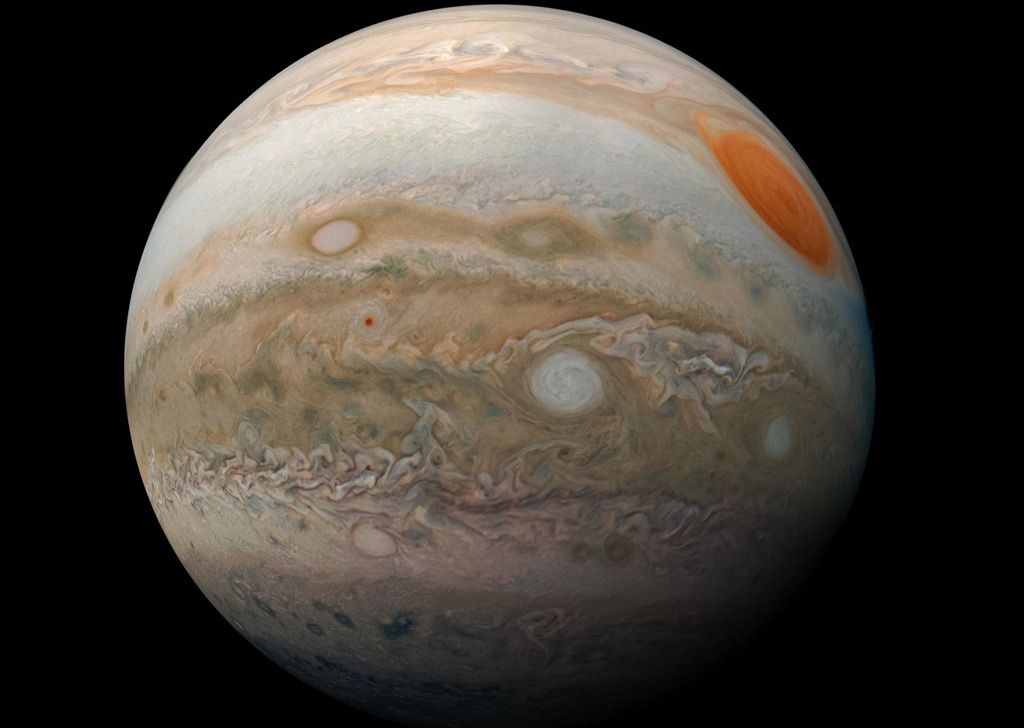Using data from both the Galileo and Juno spacecraft missions, a new model of Jupiter’s formation explains the heavier elements in the gas giant’s atmosphere.

There’s this curious relationship between theory and observation where one keeps leading to the other. First, you see an object in the sky. Then you make a hypothesis about what it is. Then you observe some more, and you change the hypothesis with the new information. As you get more and more data, you can refine the hypothesis. Yay for the scientific method.
As computing has gotten more advanced, we’ve gone from paper calculations to massive simulations that we can use to model our hypotheses and see if they really do play out. After all, we cannot rewind the formation of our own solar system to watch it happen, and going to various worlds is costly and difficult. So we make do with what we’ve already collected and keep building on our observations with these computer-generated models. Sometimes, we get lucky and get a newer mission to provide more data, though, and such is the case with Jupiter and NASA’s Juno spacecraft.
Using all that new data, along with data from the Galileo mission, a team has published their model of Jupiter in The Astrophysical Journal Letters. Because Jupiter, of course, defies some of the planetary formation expectations we have. I mean, really, what world doesn’t these days?
Jupiter, it turns out, has an atmosphere unexpectedly rich in heavy elements, and by heavy, we mean, not hydrogen or helium. Galileo dropped a probe into the atmosphere for that information. Then along comes Juno, and the new data suggests that Jupiter’s interior isn’t uniform at all and has a complex structure, which means that the interior isn’t fully mixed. And as co-author Ravit Helled explains: Since we now know that the interior of Jupiter is not fully mixed, we would expect heavy elements to be in a giant gas planet’s deep interior as heavy elements are mostly accreted during the early stages of the planetary formation. Only in later stages, when the growing planet is sufficiently massive, can it effectively attract large amounts of light element gases like hydrogen and helium.
So how did Jupiter collect all those heavier elements? Lead author Sho Shibata answers: Our idea was that Jupiter had collected these heavy elements in the late stages of its formation by migrating. In doing so, it would have moved through regions filled with so-called planetesimals — small planetary building blocks that are composed of heavy element materials — and accumulated them in its atmosphere.
Enter a bajillion simulations to see if there were any pathways of migration that gathered up enough material for Jupiter to have a bunch of heavier elements mixed into the atmosphere. And the results show that if Jupiter formed about four times farther out from the Sun than its current location, and then migrated inward, it could have collected up enough bits of planetesimals to match its actual makeup.
Finally. And now, to apply that updated formation theory to exoplanets.
More Information
NCCR PlanetS press release
“Enrichment of Jupiter’s Atmosphere by Late Planetesimal Bombardment,” Sho Shibata and Ravit Helled, 2022 February 24, The Astrophysical Journal Letters
This story was written for the Daily Space podcast/YouTube series. Want more news from myself, Dr. Pamela Gay, and Erik Madaus? Check out DailySpace.org.
This article was originally published by Beth Johnson on medium.com.





